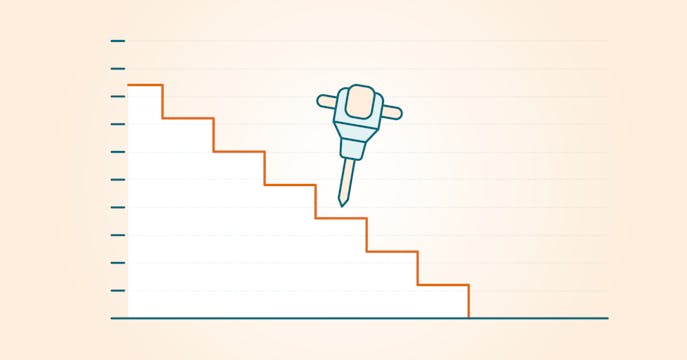What's the current rate state? The prime rate — and, therefore, variable mortgage rates — dropped again in October 2025 by 0.25% to 4.45%, and rate forecasts are hazy as to whether more cuts are in store this year or in 2026.
Fixed rates have also recently declined. Inflationary factors stemming from trade and policy volatility may keep both rates from falling substantially further, unless a recession digs in.
Here's a reminder of variable-rate benefits.
Despite suffering the equivalent of 19 rate hikes (0.25% increments) from March 2022 to June 2024, the narrative has recently shifted back to the benefits this rate type offers during a period of declining rates:
- A better rate — a 5-year variable rate is usually lower than a 5-year fixed rate.
- Instant budget relief with each variable rate drop by the Bank of Canada — if you choose an adjusting-payment variable mortgage (ARM).
- Your amortization is reduced with each rate drop, helping you pay off your mortgage faster — if you have a fixed-payment variable mortgage with a big bank (VRM).
- The rate ride — prime rates may rise and fall during your term, but you may still net out savings.
- Long-term savings — a variable rate tends to save homeowners more over the life of a mortgage.
- The flexibility to lock into a fixed rate at any time, penalty-free (make sure your lender offers this option).
- Less costly penalty than a fixed-rate mortgage if you decide to break your term.
Do variable rates still have room to fall?
Your variable rate reflects the discount off prime your lender offered for your contract rate, which stays put for your 5-year term.
The Bank of Canada is weighing U.S. trade turmoil and the resulting economic slowdown this year against inflationary pressures from tariffs, as well as increasing government debt and spending.
True North Mortgage CEO Dan Eisner predicts that the prime rate may have some room to go a bit lower in 2025 or in early 2026:
- The Bank of Canada could lower its current policy rate from 2.25% to 2.0% if economic softening continues to outweigh inflation risks (which are currently from tariffs rather than an overly warm economy).
- Another cut would bring most bank prime rates down to 4.20%, assuming the current spread with the BoC policy rate of +2.20%.
- Further rate cuts could depend on when a new U.S. trade agreement is reached and how our economy is impacted.
- Prime rates could also remain paused to allow the recent cuts to work through the economy.
This rate forecast is subject to change, as economic conditions remain volatile. Both Canada and the U.S. are grappling with politically charged policy decisions that could impact the Bank of Canada's rate agenda in both the short and long term.
How much further variable rates could fall during your term would impact how much you'd save vs. choosing a fixed rate right now.
Could variable-rate discounts shrink?
When you choose a variable rate, you'll notice it's expressed as a reduction off the prime rate (e.g. P -0.85%).
This rate discount off of prime is how lenders compete for your mortgage dollars — the discount can vary between lenders, and even hide other costs, like a monthly vs. semi-annual compounded rate.
Once you lock into a variable-rate mortgage, your discount doesn't change.
However, for a new purchase, renewal, or refinance, lenders may adjust their variable discount, for example, if a more challenging economic environment leads to rising operating costs.
Are variable rates normally lower than fixed rates?
Yes. But in fact, the normal spread relationship has only just returned, as variable rates have finally crossed the threshold amid lowering interest rates.
Variable rates are usually lower than the 5-year fixed rate by a spread of 0.25 to 1.0%. During the pandemic, this spread increased to around 1.5%. But as prime rates skyrocketed between 2022 and 2024, we were living in the (rate) upside-down, with variable rates going and staying higher than fixed rates.
A 'normally' lower variable rate (compared to a fixed rate) is one compelling reason homeowners choose this rate type to save.





